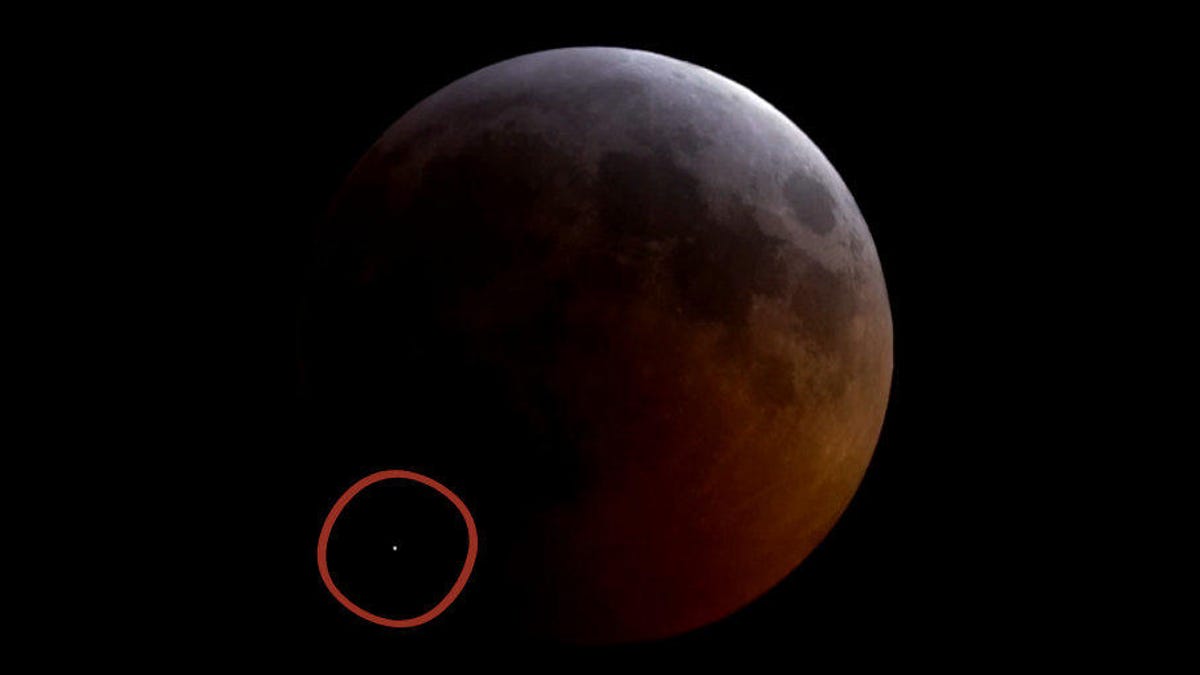Asteroid's impact during the blood moon was equal to a ton of TNT
A meteoroid was seen hitting our natural satellite during the lunar eclipse. Now we have the details on the collision.

This still from the Griffith Observatory's livestream shows the moment of impact.
On top of the hype around last week's "super blood wolf moon," the eclipse was punctuated by an asteroid smacking into the lunar surface at the height of the big event.
Now researchers have analyzed some of the observations of that impact to get a better picture of what exactly created the flash seen across the world.
Researchers from Colombia and the Dominican Republic looked at videos taken by amateur astronomers to reconstruct the smash-up. That's according to a draft of a paper submitted to the journal Icarus and posted on Cornell University's pre-print server.
The researchers estimate the collision generated the same amount of energy as between 0.9 and 1.8 tons of dynamite, leaving behind a crater that could be up to 15 meters (49 feet) across, which "could be detectable by prospecting lunar probes."
"The impact happened in the region of the easily identifiable Byrgius crater to the southeast of Mare Humoris," the paper reads.
That spot is near the western limb of the moon, almost on the edge of the part of the satellite that faces Earth.
Remarkably, the meteoroid that created the scar was probably no more than 30 to 50 centimeters (1 to 1.6 feet) in diameter, but is estimated to have been traveling around 13.8 kilometers per second (30,890 mph).
The moon's pock-marked surface indicates it gets pretty regularly battered by little space rocks like this. Fortunately for us, and unlike the moon, Earth is the beneficiary of a relatively thick atmosphere and most smaller rocks burn up when they attempt to penetrate it.
NASA turns 60: The space agency has taken humanity farther than anyone else, and it has plans to go further.
CNET Magazine: Check out a sample of the stories in CNET's newsstand edition.

